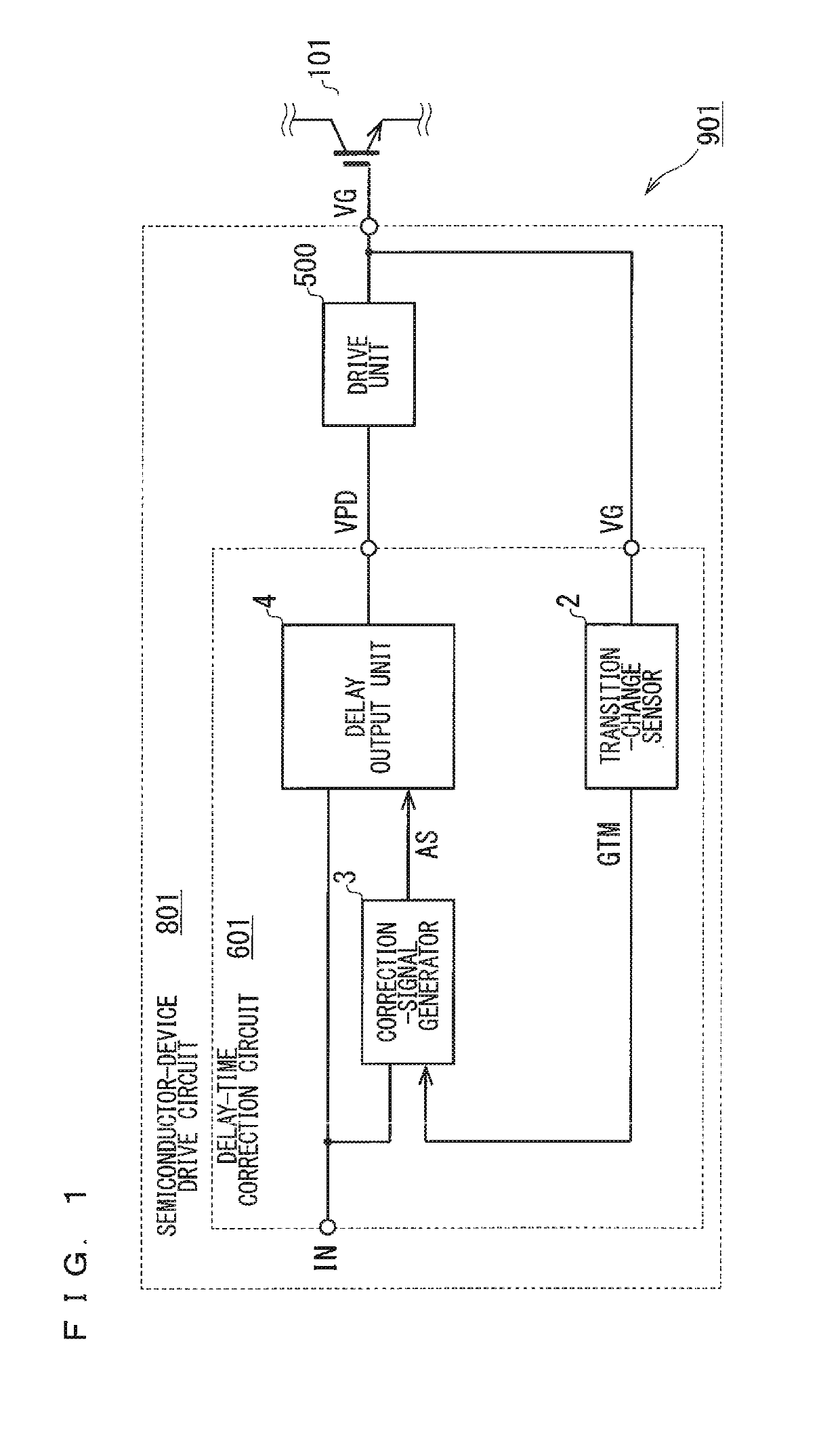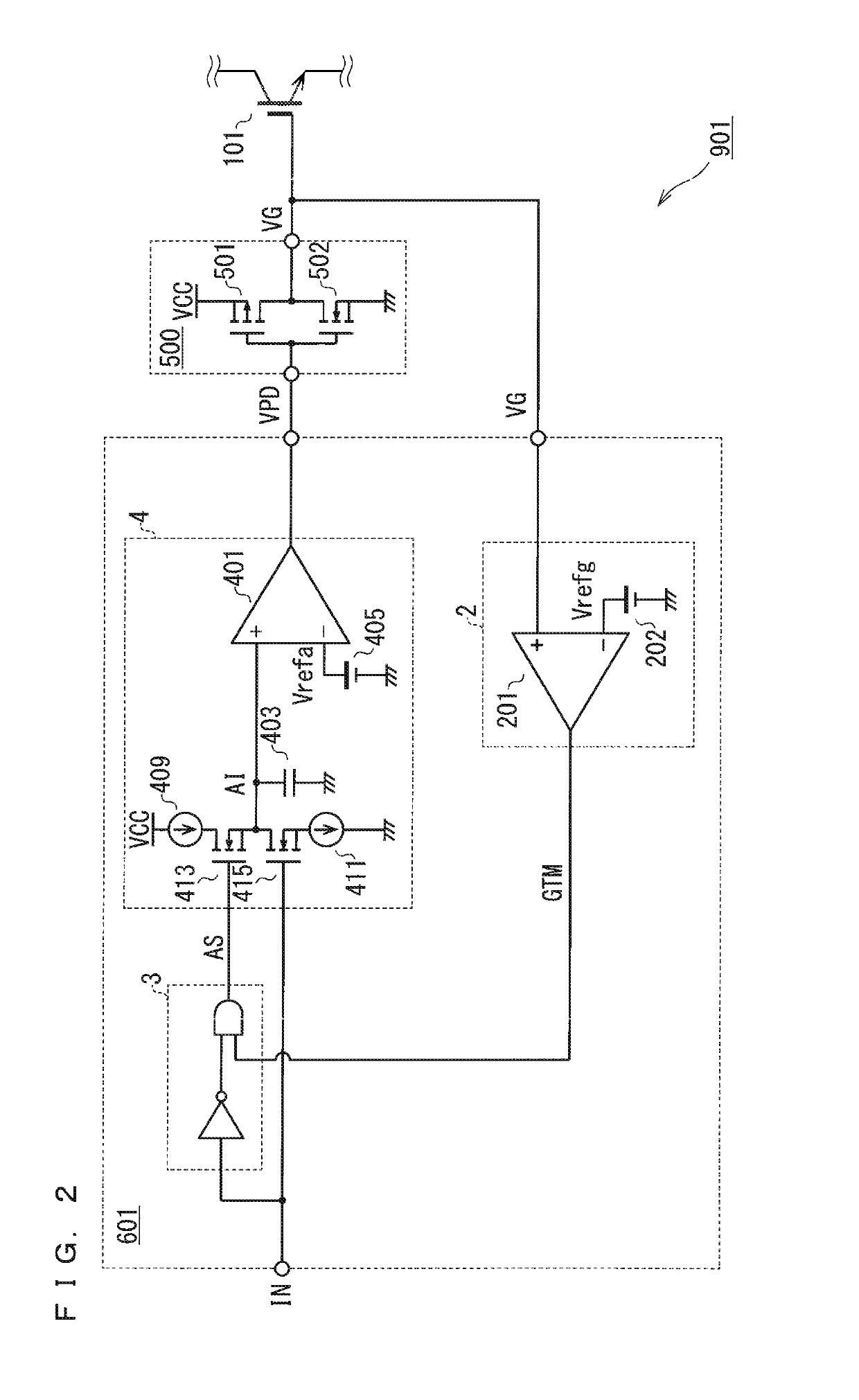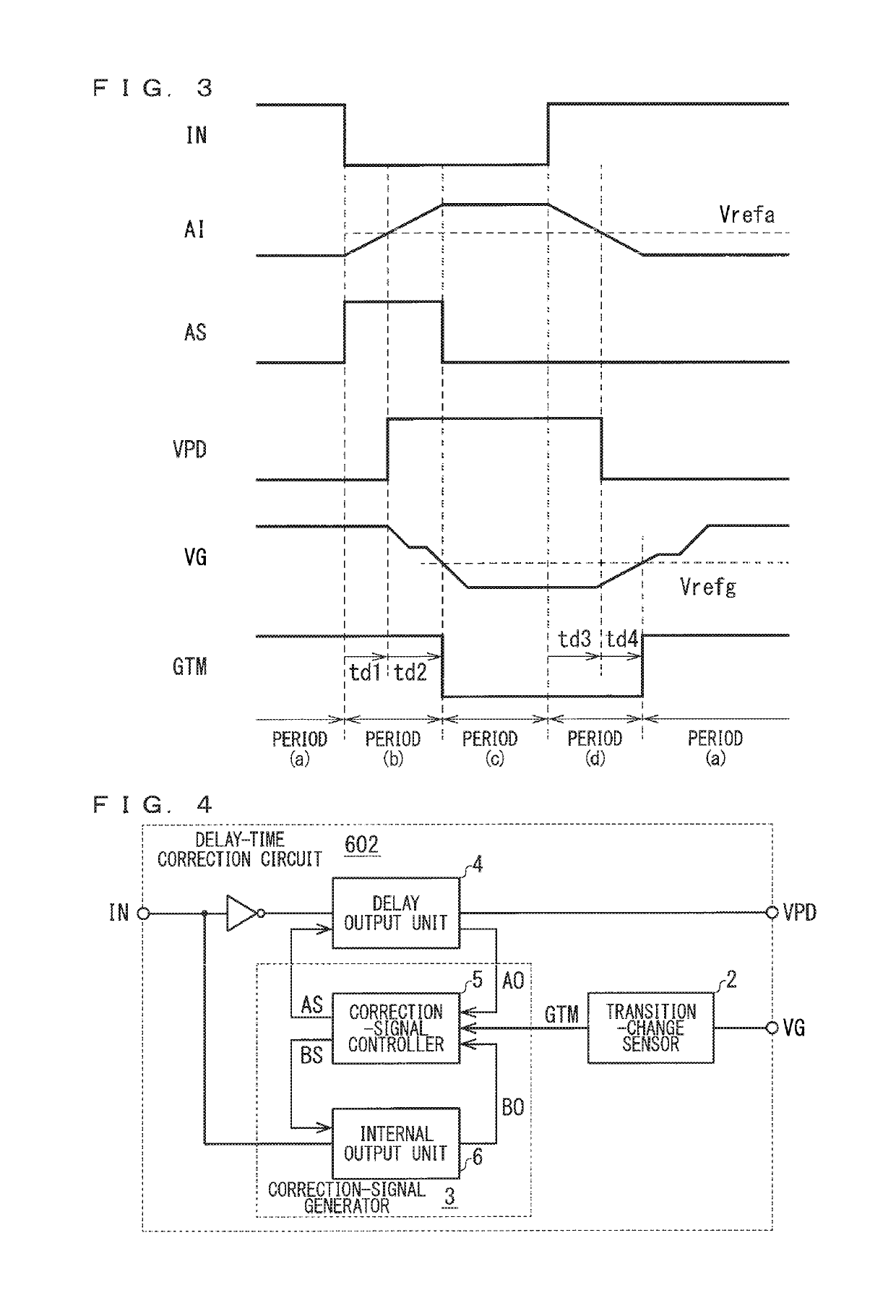Delay-time correction circuit, semiconductor-device drive circuit, and semiconductor device
a technology of delay-time correction and drive circuit, which is applied in the direction of electronic switching, power conversion systems, pulse techniques, etc., can solve the problems of undesirable short circuit, distorted waveform, timing lag in switching operations between semiconductor switching elements, etc., and achieve accurate correction of deviation in output signal width. , the effect of simple configuration
- Summary
- Abstract
- Description
- Claims
- Application Information
AI Technical Summary
Benefits of technology
Problems solved by technology
Method used
Image
Examples
first preferred embodiment
[0026](Summary)
[0027]FIG. 1 is a schematic block diagram of a configuration of an inverter 901 (semiconductor device) in a first preferred embodiment. The inverter 901 includes a semiconductor-device drive circuit 801 and an IGBT 101 (semiconductor switching element). The inverter 901 performs a switching operation using a drive signal that is generated in response to an external input signal, IN. The input signal IN is a digital signal corresponding to a turn-on state and turn-off state of the IGBT 101, and is a binary signal representing a high level or low level. The drive signal is specifically a gate signal, VG, (drive signal, gate voltage) that is applied to a gate of the IGBT 101.
[0028]The semiconductor-device drive circuit 801 includes a drive unit 500 and a delay-time correction circuit 601. The delay-time correction circuit 601 may be integrated within a single integrated circuit (IC) excluding a drive unit 500. Alternatively, the delay-time correction circuit 601 may be i...
second preferred embodiment
[0066](Summary)
[0067]FIG. 4 is a schematic block diagram of a configuration of a delay-time correction circuit 602 in a second preferred embodiment. The delay-time correction circuit 602 can be used in the semiconductor device 901 (FIG. 1) as the alternative to the delay-time correction circuit 601. Delay-time correction circuits in the other preferred embodiments, details of which will be described later on, can be used in the same manner.
[0068]The first preferred embodiment details a configuration in which the delay output unit 4 stores the time corresponding to the length of the period for the transition change in the immediately preceding turn-off operation. The second preferred embodiment details a configuration in which the delay output unit 4 stores a time corresponding to the length of the period for the transition change in the immediately preceding turn-on operation. To conform to this configuration, FIG. 4 illustrates a NOT circuit inserted between a terminal for the inpu...
third preferred embodiment
[0095]FIG. 7 is a circuit diagram illustrating a non-limiting example of how a delay-time correction circuit 603 in a third preferred embodiment is implemented. In the third preferred embodiment, the delay-time correction circuit 603 includes a delay output unit 4c and an internal output unit 6c in place of the delay output unit 4 and internal output unit 6 in the delay-time correction circuit 602 (FIG. 5), respectively. The delay output unit 4c includes a clamp circuit incorporated into the delay output unit 4. The internal output unit 6c includes a clamp circuit incorporated into the internal output unit 6. The following described a specific configuration.
[0096]The delay output unit 4c includes a clamp circuit 417 at a positive input terminal of the comparator 401. The internal output unit 6c includes a clamp circuit 417b at a positive input terminal of the comparator 401b. The clamp circuits 417 and 417b respectively clamps the terminal voltages AI and BI during the discharge at ...
PUM
 Login to View More
Login to View More Abstract
Description
Claims
Application Information
 Login to View More
Login to View More - R&D
- Intellectual Property
- Life Sciences
- Materials
- Tech Scout
- Unparalleled Data Quality
- Higher Quality Content
- 60% Fewer Hallucinations
Browse by: Latest US Patents, China's latest patents, Technical Efficacy Thesaurus, Application Domain, Technology Topic, Popular Technical Reports.
© 2025 PatSnap. All rights reserved.Legal|Privacy policy|Modern Slavery Act Transparency Statement|Sitemap|About US| Contact US: help@patsnap.com



